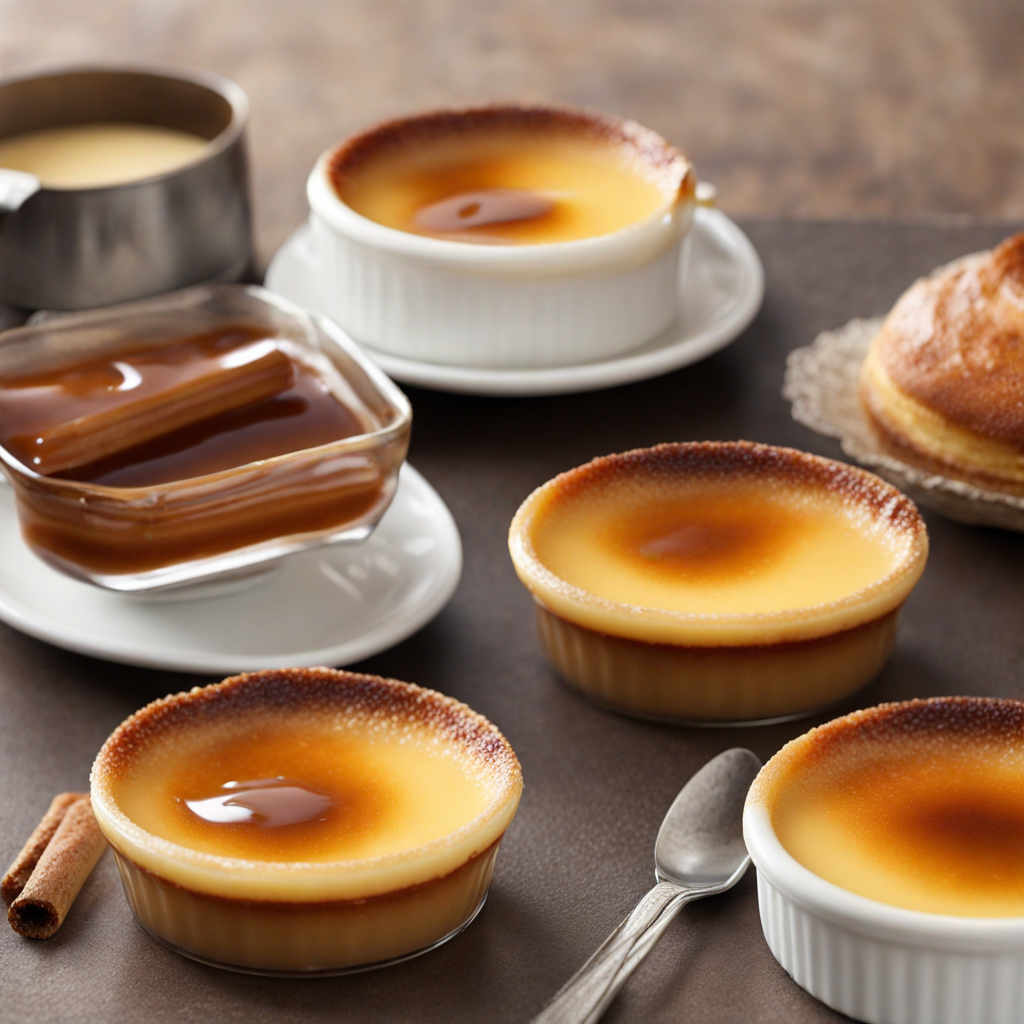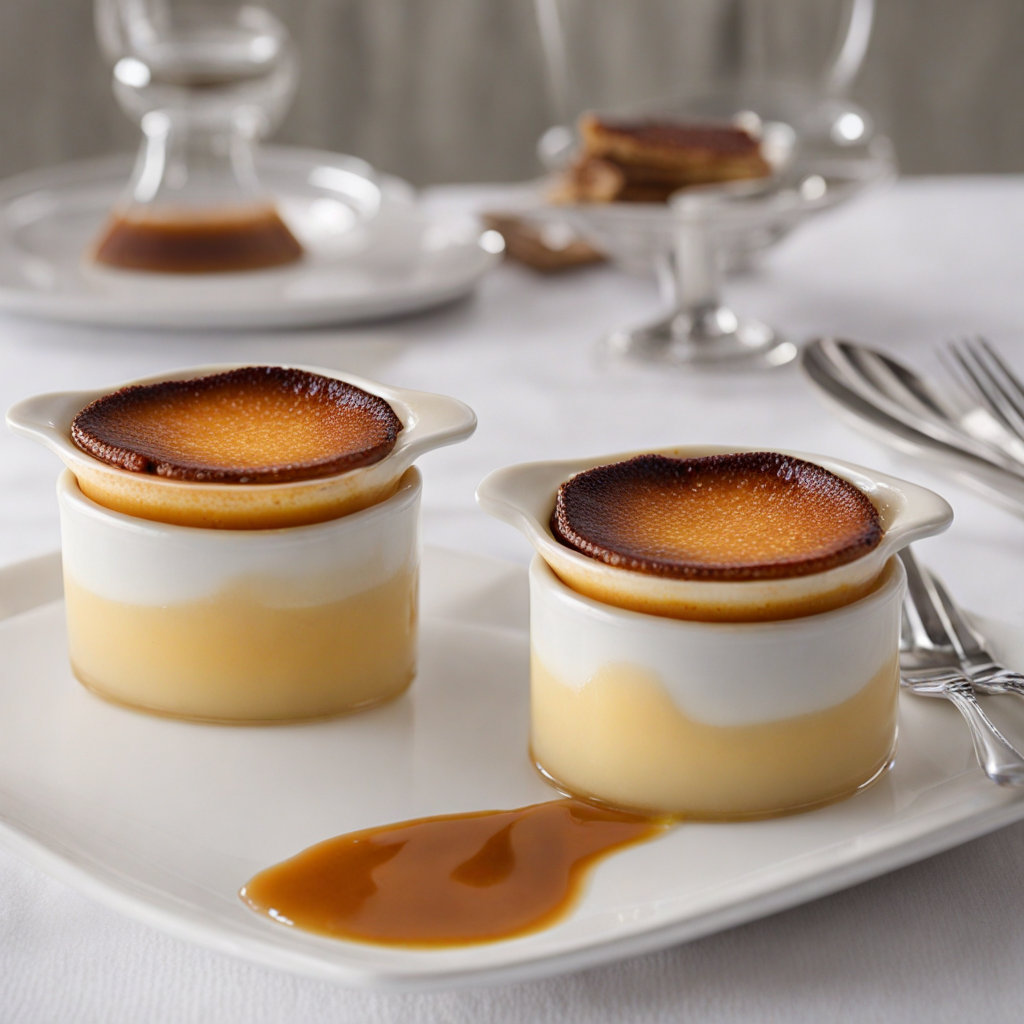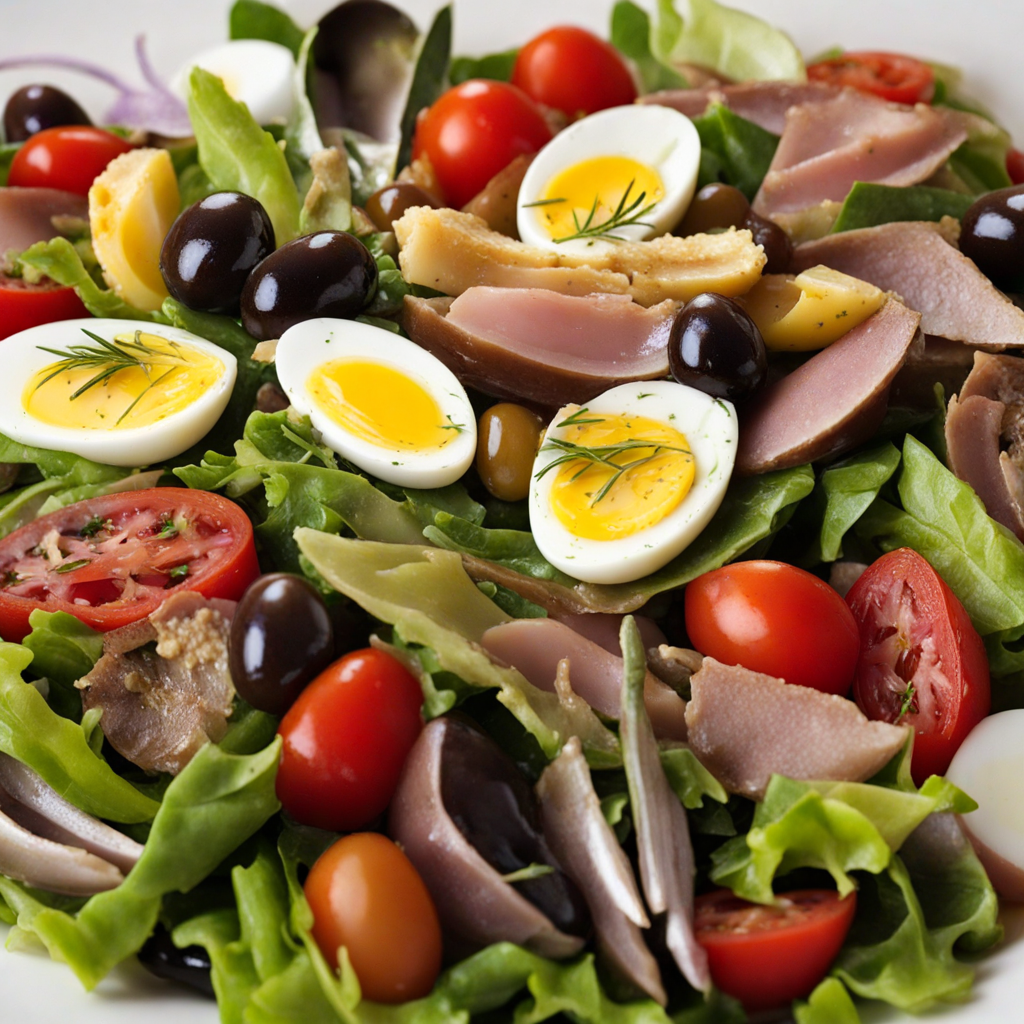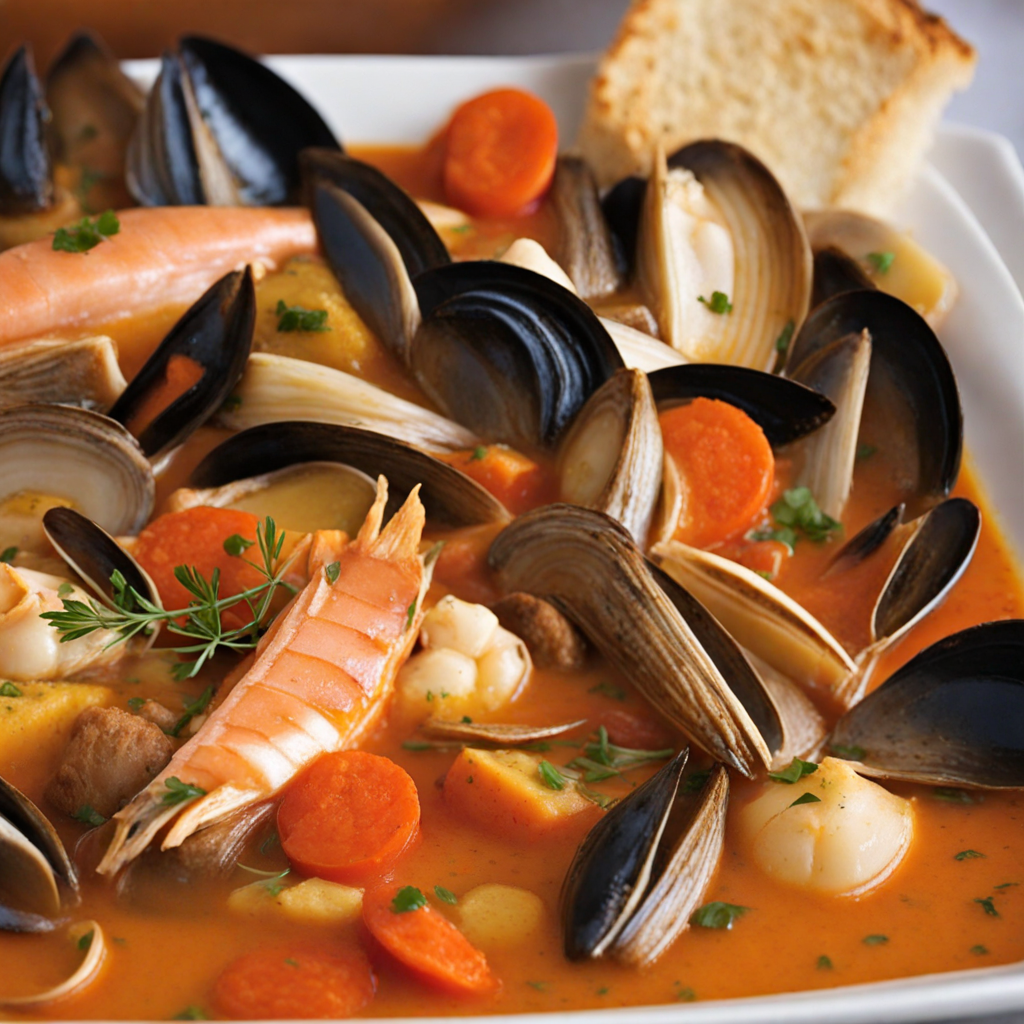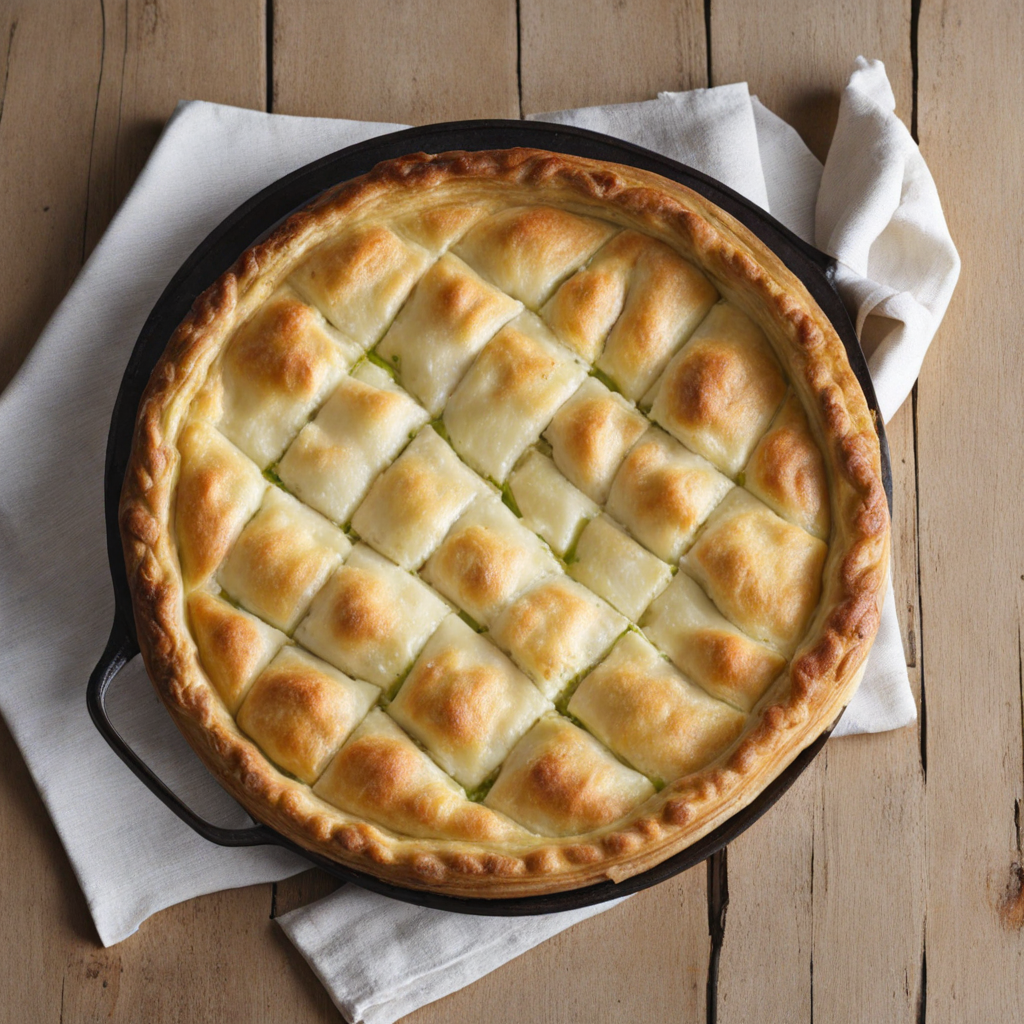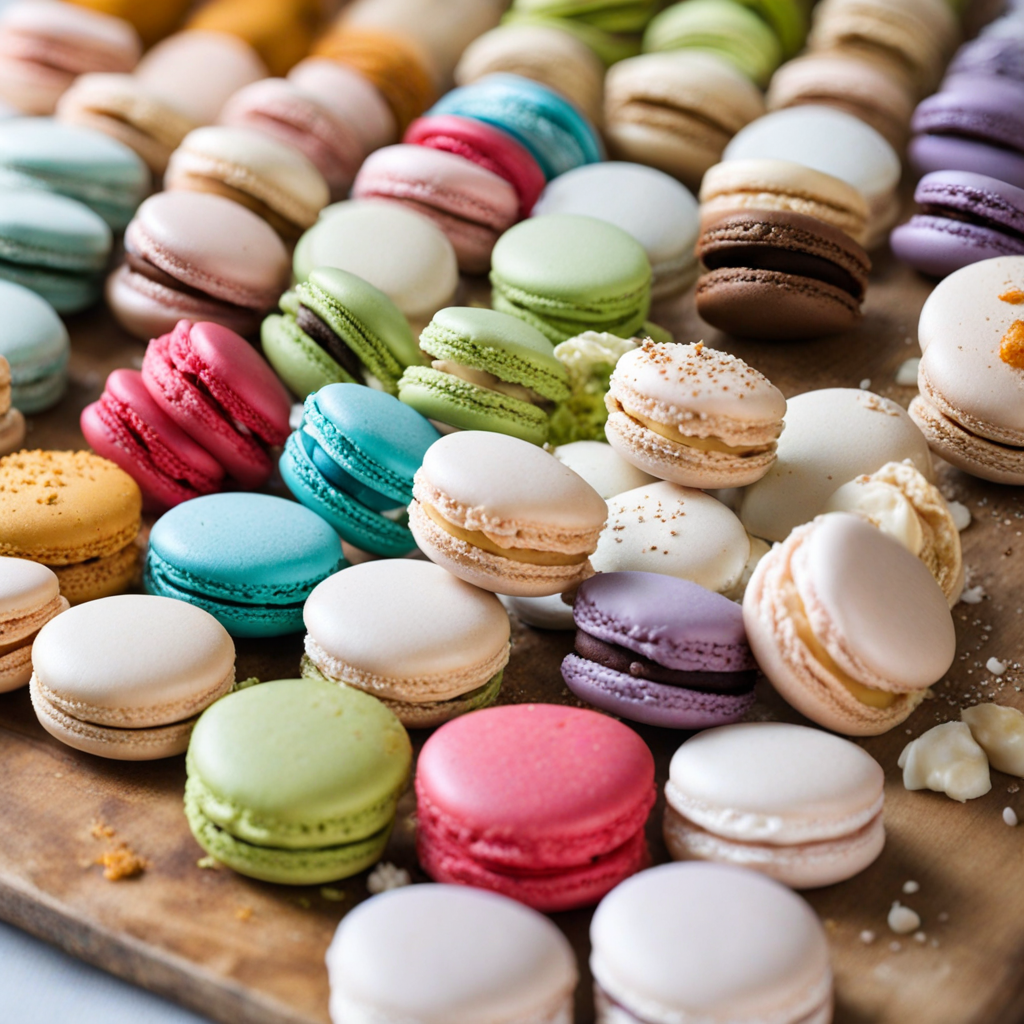Crème Brûlée
Crème Brûlée is a classic French dessert that tantalizes the taste buds with its perfect balance of creamy richness and caramelized sweetness. At its core, this delightful dish consists of a smooth custard made from egg yolks, cream, sugar, and vanilla, which is baked gently in a water bath. The result is a silky, luscious texture that melts in your mouth, providing a comforting base that invites you to dig deeper. What truly sets Crème Brûlée apart is its signature topping—a thin layer of hardened caramelized sugar that forms a glass-like crust. This contrast between the cool, soft custard and the crunchy, sweet surface creates a delightful textural experience. To enjoy it fully, you typically use a small spoon to crack through the caramelized layer, releasing the rich aroma of vanilla and allowing the creamy custard to shine through. The first bite is a harmonious blend of flavors, with the sweetness of the sugar complementing the subtle vanilla notes in the custard. Served in individual ramekins, Crème Brûlée is not only a treat for the palate but also a feast for the eyes. Its golden-brown crust, often delicately torched to achieve that perfect caramelization, invites you to indulge. Whether enjoyed after a lavish dinner or as a sweet ending to a casual meal, this French dessert is a timeless classic that embodies the art of simple yet elegant cooking, making it a must-try for anyone looking to explore new and exciting tastes.
How It Became This Dish
The Sweet Legacy of Crème Brûlée: A Historical Journey Crème brûlée, with its silken custard base and crackling caramelized sugar topping, has become a beloved dessert worldwide, yet its history is steeped in myth and cultural significance that stretches back centuries. The name itself, translating to "burnt cream" in French, hints at the delicate balance of textures and flavors that this dish embodies—rich and creamy beneath a crisp, caramel shell. But how did this delectable dessert come to be? What stories are woven into its rich tapestry of tradition? #### Origins: A Culinary Enigma The exact origins of crème brûlée are somewhat elusive, with several countries vying for the title of its birthplace. While it is widely accepted that the modern version we adore today hails from France, historical records suggest that similar custard-based desserts existed in other cultures. The earliest known reference to a dish resembling crème brûlée appears in a cookbook from 1691 by François Massialot, a French chef who served the Duke of Orléans. In "Le Cuisinier Royal et Bourgeois," Massialot presents a recipe called "crème brûlée," instructing readers to cook a custard mixture and then top it with sugar, which is subsequently burnt. However, the Spanish also lay claim to a similar dessert known as "crema catalana," which has been enjoyed since at least the 18th century. This dessert features a custard base flavored with cinnamon and lemon zest, topped with sugar that is caramelized using a hot iron rather than a torch, as is customary in crème brûlée. The debate over the true origin continues, but what remains clear is that the concept of a sweet, creamy custard topped with a burnt sugar crust has fascinated palates across Europe for centuries. #### Cultural Significance: A Dessert of Royalty and Common Folk As crème brûlée emerged as a celebrated dessert in France, it became emblematic of the opulence of French cuisine. It was often served in the grand dining halls of the nobility, where elaborate dishes were expected to impress guests. Its rich texture and the theatricality of cracking the sugar crust with a spoon captured the spirit of the lavish banquets of the French aristocracy. In the 18th century, crème brûlée became particularly popular in the culinary repertoire of the French court. The dessert was often associated with the lavish meals prepared for King Louis XIV, who was known for his extravagant feasts and love of fine food. The dish was not merely a sweet treat; it represented the artistry and sophistication of French culinary tradition, showcasing the skill of chefs who could master the delicate process of creating the perfect custard and caramel. As the French Revolution swept through the country at the end of the 18th century, the culinary landscape began to shift. The fall of the aristocracy meant that once-exclusive dishes like crème brûlée became accessible to the bourgeoisie. Chefs who had once served nobles opened restaurants catering to the middle class, and crème brûlée found its place on menus across France. The dessert evolved from a symbol of wealth to a beloved staple in French bistros, where it could be enjoyed by everyday diners. #### Development Over Time: From Classic to Contemporary The 19th century saw further evolution in the preparation and presentation of crème brûlée. As culinary techniques advanced, so too did the dessert itself. With the advent of the gas flame in the kitchen, chefs could caramelize the sugar more easily, leading to the modern method of using a kitchen torch. This allowed for a more precise and controlled approach to achieving the perfect caramel crust, making the process accessible to home cooks and further popularizing the dish. Throughout the 20th century, crème brûlée continued to gain international acclaim. It was embraced in various culinary circles, appearing in the menus of fine dining establishments around the world. As chefs began experimenting with flavors and presentations, variations of crème brûlée emerged, incorporating ingredients such as vanilla, lavender, citrus, and even chocolate. This creativity allowed the dessert to transcend its traditional roots, appealing to a broader audience and adapting to contemporary tastes. In recent decades, crème brûlée has experienced a resurgence in popularity, often touted as a quintessential French dessert that captures the essence of fine dining. Its visual appeal—the contrast of the glossy custard and the shiny, crackled sugar crust—makes it a favorite for both home cooks and professional chefs. The dessert has inspired countless adaptations, from the classic vanilla bean version to innovative takes that incorporate matcha, espresso, or seasonal fruits. #### A Global Dessert As the world has become increasingly interconnected, crème brûlée has transcended its French origins to become a global dessert. Chefs around the world have embraced the dish, incorporating local flavors and ingredients into their interpretations. In Asia, for instance, you might find crème brûlée infused with green tea or coconut, while in Latin America, variations might feature spices like cinnamon or flavors such as dulce de leche. Moreover, the dessert's presence in popular culture has only solidified its status as a culinary icon. From mentions in films and literature to its appearance on reality cooking shows, crème brûlée has captured the imagination of dessert lovers everywhere. It has become a symbol of culinary elegance, often associated with celebrations and special occasions. #### Conclusion: The Sweet Enduring Legacy Today, crème brûlée stands as a testament to the rich tapestry of culinary history, a dish that speaks to the evolution of taste and technique over centuries. From its uncertain origins to its position as a staple of French cuisine, crème brûlée embodies both tradition and innovation. It invites us to appreciate the craftsmanship of those who came before us, while also inspiring new generations of cooks to explore its potential. As we crack the caramelized sugar crust and savor the creamy custard beneath, we partake in a history that spans continents and cultures, delighting in a dessert that has remained timeless. Crème brûlée is more than just a sweet ending to a meal; it is a celebration of history, artistry, and the universal love of good food—a dessert that will continue to enchant and inspire for years to come.
You may like
Discover local flavors from France


